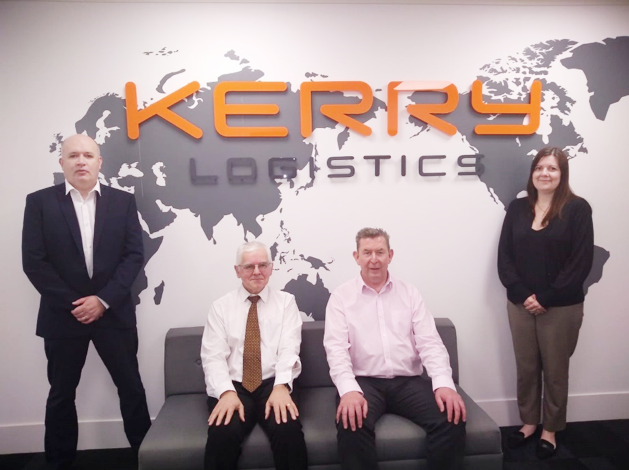3PL’s vital role in today’s delivery cycle
By Ayesha Rashid
The global third-party logistics (3PL) market was valued at $1,027.71 billion in 2019, and is projected to reach $1,789.94 billion by 2027, registering a CAGR of 7.1% from 2020 to 2027. In 2019, the Asia-Pacific region garnered the highest share in the global 3PL market. (Source: Allied Market Research)
Pull Quote: “3PLs are companies that provide services such as packaging, inventory management and warehousing at a customer’s location for use during shipping. A 3PL service provider’s process can be as limited or as broad as the customer would like and customized to that individual customer’s needs. The process can be a simple as performing a basic ‘pick and pack’, and as complex as full supply chain management involving movement of the goods from origin through to warehousing, raw material provision, and supply management and warehousing.” – David Mallinson, UK Airfreight Director at Kerry Logistics
Text starts here…
Logistics is vital to any business. In fact, it has evolved to become the cornerstone of most companies. Shipping, storage, transport and other logistical processes are some of the important aspects that need careful planning and execution, with efficient warehouses playing a vital role in this process. Having an efficient 3PL provider ensures that your logistics requirements are met at all times.
Third-party logistics (3PL) is an essential part of a company’s supply chain. The 3PL provider handles a number of different services for its customers including transportation management, warehousing and distribution, inventory management, returns processing and compliance management.
3PL logistics is also a key part of supply chain management and its importance lies in the fact that it offers professional services to companies looking to outsource their logistics processes. If you’re looking for an effective 3PL, you need to recruit the right people and make sure they have the necessary skillsets to carry out the job.
The global third-party logistics (3PL) market was valued at $1,027.71 billion in 2019, and is projected to reach $1,789.94 billion by 2027, registering a CAGR of 7.1% from 2020 to 2027. In 2019, the Asia-Pacific region garnered the highest share in the global 3PL market (Allied Market Research).
In addition, globalization has helped to establish a worldwide network of manufacturing activities. To keep it running smoothly, the demand for 3PL services is expected to increase. Furthermore, the scope of 3PL services is expected to grow during the forecast period, as productivity gains are realized. The growth of the global 3PL services market is also driven by the development of the e-commerce industry and the increase in reverse logistics operations.
David Mallinson, UK Airfreight Director at Kerry Logistics, explains to Air Cargo Update how a 3PL benefits a business.
A basic ‘Pick and Pack’
3PLs enable commercial shippers to outsource the majority of their supply chain management functions to a 3PL provider. This provides them with better control over and cost efficiency in their logistics operations.
The third-party supply chain model was developed in the 1970s when intermodal marketing companies began receiving packaged loads from shippers and handled those loads to railroads for delivery. In the decades since, the process has become refined and modernized with 3PL software that simplifies and streamlines the whole process for 3PLs and the companies that hire them.
“3PLs are companies that provide services such as packaging, inventory management and warehousing at a customer’s location for use during shipping. A 3PL service provider’s process can be as limited or as broad as the customer would like and customized to that individual customer’s needs. The process can be a simple as performing a basic ‘pick and pack’, and as complex as full supply chain management involving movement of the goods from origin through to warehousing, raw material provision, and supply management and warehousing.”
Moreover, companies that outsource their order fulfillment to a 3PL do not have to invest in and maintain a fleet of logistics assets. By outsourcing order fulfillment, companies can focus more on growing and developing their core business. While the process has become refined, modernized with software and technology, and streamlined over the years, it remains similar in many ways despite these changes.
FTL’s and LTLs in 3PL
For large shipments or volumes of goods that take up the entire truck, full truckload or FTL shipping is the best option. It is a truck that carries only the company’s shipment. Even if the company’s shipment does not take up the entire truck capacity, the company can still book an entire truck. This ensures that goods or cargo do not end up stuck with other products when being transported.
As the name suggests, LTL – Less than Truckload carries freight from multiple shippers rather than from an individual company in one trailer. The purpose of LTL is to maximize the truck’s capacity to the maximum extent possible. With less shipping requirements and fewer budget constraints, small businesses tend to favor this type of trucking load.
According to Mallinson, the role FTL and LTL play in 3PL, is essentially the last link in the delivery cycle in the process usually described as ‘final mile’.
3PLs play a vital role in today’s delivery cycle, providing the link between shippers and end customers. Fulfillment services and advanced logistics provide assurance that goods will reach consumers or businesses. Whether the product is going to the consumer or being used as an integral part of manufacturing process, they help ensure goods are delivered when they should be, intact and ready for use.
Role of technology
In recent years, 3PLs have embraced technology to tackle major challenges in the logistics industry. Shippers are demanding more from a logistics partner than just transportation: they need planning, processing and tracking capabilities that can be delivered through innovative technologies.
This provides fulfillment centers with greater visibility into shipments, allowing them to make fast decisions and keep their shipper partners happy.
 With a tech-enabled 3PL, the shipping process is automated by having systems communicate directly with one another, therefore eliminating the possibility of human error.
With a tech-enabled 3PL, the shipping process is automated by having systems communicate directly with one another, therefore eliminating the possibility of human error.
Moreover, connected technologies help with increased visibility into the 3PL’s performance, as the fulfilment steps of picking, packing and shipping are directly linked to the software, allowing exactly how accurate orders are being handled.
In order to streamline shipping and order fulfillment, 3PL providers with a tech focus use a variety of advanced information technology tools to meet sellers’ requirements. Besides the traditional fulfillment services and logistics operations that 3PLs and other logistics companies provide, such as inventory warehousing, picking, packing, shipping, as well as value-added services, most 3PL companies provide updated technology tools in addition to the traditional fulfillment services and logistics operations. Additionally, they can provide software that integrates data from a variety of sources to give both the seller and consumer an understanding of the order fulfillment process as well as help with decision-making.
“The biggest advantage is that tech-enabled 3PL’s offer savings and greater flexibility and have a broader variety of solutions to hand that may not be available to the client currently.
“The use of technology is absolutely critical. Visibility alongside systems that are interoperable and above all easy to use, offers clients the maximum benefit and opportunity in improving their supply chains. Switching to a tech-based 3PL can provide greater flexibility with scaling up or down during peak/slack periods, saving costs and time in allowing the customer to focus on other core areas of their businesses,” Mallinson further explains in our email interview.


